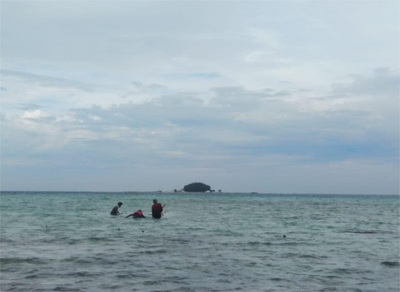IPB Universty Students Explains about Fish Community in Karang Congkak Island

The structural information of fish community in a seagrass ecosystem in Karang Congkak Island, is a basic information of the small fish resource management in Thousand Islands National Park (Taman Nasional Kepulauan Seribu). Through her research, Noviana, the student of Aquatic Resource Management (MSP), Faculty of Fisheries and Marine Science (FPIK) hopes that people will know about the seagrass ecosystem and its important role in supporting the sustainability of marine fish resources.
According to her, this ecosystem has become an area which aims to protect various species of marine fish. Beside that, protecting the seagrass ecosystem as a habitat for many species of marine fish is a shared responsibility.
Conducting a research in Thousand Islands Regency was not easy. The most difficult part was when the weather was not helping, especially when entering the monsoon season (December-February). But high waves didnt get their spirits down to do this research.
Novianas research aims to describe the structure of fish community in Karang Congkak Island by observing the relationship between the fish community and the condition of aquatic environment, especially the seagrasscoverage. The fish diversity and abundances have a strong relationship with seagrasscoverage. This indicates that the bigger the seagrass area (available habitat), the higher the fish abundances, especially the new born ones.
Through this five-months research, 46 species of marine fish have been collected. The found fish is dominated by the fish in the yuwana (juvenile) stage, especially yuwana fish which has high economic value. This indicates that the seagrass ecosystem in Karang Congkak Island has an important role in the sustainability of fish resources, due to its function as the habitat for various marine species,she said.
Noviana was not the only one whos participated in this research. There are supervisors (Aquatic Resource Management lecturers) and also fellow S2 and S1 students gathered in team members. This research was successful because of the good work ethic and cooperation among all the research members. One valuable lesson learned by Noviana is, no matter how big and heavy the work is, it can be done successfully with a solid and supportive team.
The research of fish community ecology in seagrass ecosystem, Thousand Islands Regency was led by Charles PH Simanjuntak, SPi, MSi, PhD (Lecturer of Aquatic Research Management Department, IPB University). This research was conducted since March 2017 until April 2019.
There are three islands which became the focus of the research, namely Panggang Island, Semak Daun Island, and Karang Congkak Island. The aim of this research is to analyse the important role of seagrass ecosystem as the habitat for the new born fish. I was one of seven students of Aquatic Resource Management students who participated in this research. The topic of my research is The strcucture of fish community in seagras ecosystem in Karang Congkak Island, Thousand Islands National Parkunder the supervision of Charles PH Simanjuntak and Dr. Ir. Djumanto, MSc (from Aquatic Research Management Department, Gadjah Mada University). The data for my research is collected on November until December 2018 and February until March 2019,she added.(IAAS/NRF)
Keyword: Seagrass, Karang Congkak Island, Thousand Islands Regency, Aquatic Resource Management, IPB University.


